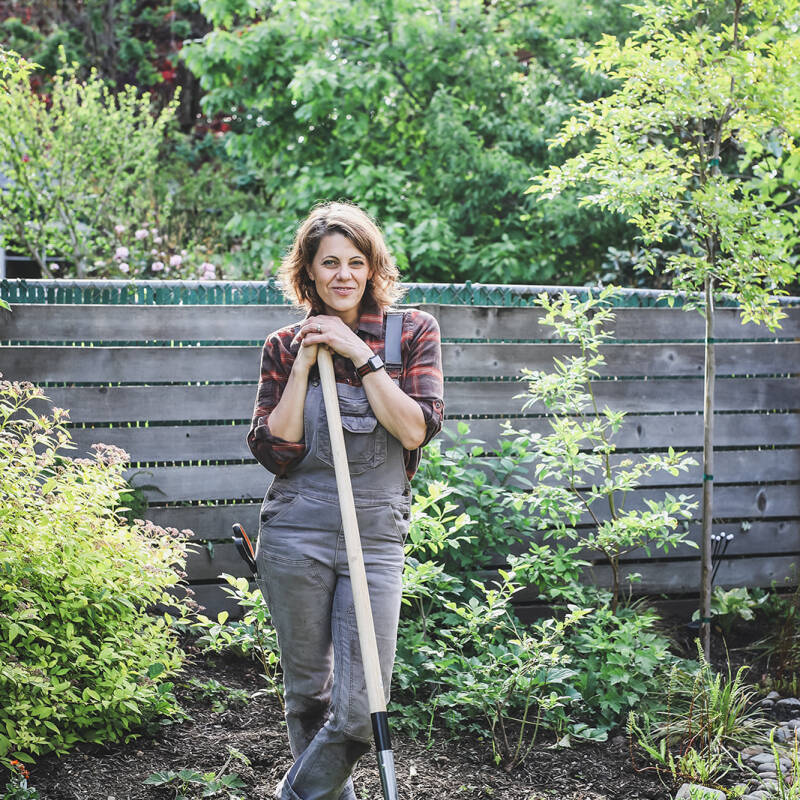Because of our current COVID-19 quarantining, I’ve upped my daily coffee intake so much now that mounds of grounds stare at me in the kitchen. This got me thinking: What else can I do with this brown stuff other than toss it a trash can that gets picked up every week?
Turns out, coffee grounds are free organic matter and contain a fair amount of nitrogen as well as potassium and phosphorus, plus other important micronutrients. Of course the amount and proportions of these nutrients differ from brew to brew and brand to brand, but generally coffee grounds (when used with care), can give your garden a real boost.
So coffee-loving gardeners, please keep reading to learn how to safely add used coffee grounds:
Featured photograph by Mimi Giboin for Gardenista, from Homemade Garden Remedies: 5 Natural Solutions for Healthier Soil and Plants.
Use it like mulch.

Mulch is undoubtedly helpful for reducing weed growth and helping soil retain moisture, so consider adding coffee grounds to your existing mulch—just remember not to create a thick blanket around plants or use it around tender seedlings. The reason is that coffee grounds contain caffeine and some plants may be more sensitive to this stimulant, potentially suppressing the growth of young plants. Also, coffee grounds, being very fine particles, are prone to locking together so a pile or mass of them would create an unhealthy water-resistant barrier. Now, if you have a big area to cover—and maybe you don’t drink that much coffee—consider collecting some from coffee shops (generally baristas are happy to give this stuff away for free) and mixing it in.
Use it as a slow-release fertilizer.

Most people think that brewed coffee grounds are acidic—which is true—but the amount can vary a lot. Actually, fresh grounds have a higher acidity level. This means you shouldn’t rely on spent grounds to greatly alter your soil’s pH. There are acid-loving plants, however, that would appreciate a boost from fresh grounds, plants like hydrangeas, azaleas, rhododendrons, blueberries, carrots, and radishes. Just sprinkle some grounds onto your soil and either rake or lightly scratch it in. Tip: tomatoes are not coffee fans.
Another idea: coffee ground tea. Add 2 cups of brewed coffee grounds to a 5-gallon bucket filled with water. Let the “tea” steep overnight then use this brew as a liquid plant fertilizer.
Use it to feed worms.

Vermicomposters say that their worms are also coffee addicts. Every week, add a cup or so of grounds to their bin and this should feed their addiction nicely. Tip: Paper coffee filters can go in too.
Use it to deter bad bugs.
Slugs or snails bumming you out? Spread used coffee grounds around plants that are vulnerable to be being munched on because grounds are naturally abrasive and sharp, and soft-bodied critters avoid rough surfaces. However, don’t rely on this as your main line of attack.
Use it as a compost companion.

Add coffee grounds and used paper filters to your compost pile. And while you might think this brown stuff is part of the brown category, grounds are actually nitrogen-rich green material, just like food scraps and grass clippings. Remember, your compost pile must be balanced with enough brown compost material, like dried leaves and newspaper. Tip: aim for a 4-to-1 ratio of brown to green material.
Use it to keep animals away.
Bonus! Many creatures are repelled by coffee, including cats. Scatter coffee in your garden to prevent them from using it as their litter box. (Large doses of coffee grounds could be harmful to dogs, however, and because it’s hard to say how much, it’s best to avoid using them in your garden if your furry friend likes to chew and eat anything not nailed down.)
Have coffee grounds successfully made it into your garden? We would love to hear about it.
For more on soil health, see:
- Houseplant Help: Is It OK to Reuse Potting Soil?
- The Garden Decoder: Should You Get a ‘Soil Test’?
- Your First Garden: What You Need to Know About Topsoil









Have a Question or Comment About This Post?
Join the conversation